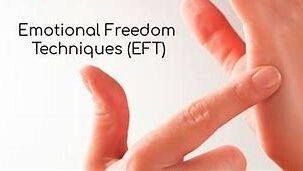Emotional Freedom Technique (EFT), also known as tapping, is an alternative therapy that combines elements of acupressure and modern psychology to help alleviate emotional distress and physical pain.

How EFT Works
- Tapping Points: EFT involves tapping on specific meridian points on the body, primarily on the head and face, while focusing on a particular issue or fear.
- Energy Balance: The technique is based on the idea that negative emotions and physical pain are caused by disruptions in the body’s energy system. By tapping on these meridian points, EFT aims to restore balance and reduce emotional distress1.
- Setup and Sequence: The process typically involves identifying the issue, testing the initial intensity, setting up a reminder phrase, and then tapping on the meridian points in a specific sequence.
Benefits of EFT
- Reduces Anxiety and Stress: EFT has been shown to help reduce symptoms of anxiety and stress by promoting relaxation and emotional balance.
- Alleviates Physical Pain: Some studies suggest that EFT can help alleviate physical pain, such as headaches and muscle tension, by addressing the underlying emotional causes.
- Improves Emotional Well-Being: By addressing negative emotions and promoting self-acceptance, EFT can improve overall emotional well-being and mental health.
- Supports PTSD Recovery: EFT has been used as a complementary therapy for individuals with post-traumatic stress disorder (PTSD), helping to reduce symptoms and improve coping mechanisms.
How to Practice EFT
- Identify the Issue: Choose one specific issue or fear to focus on.
- Test the Initial Intensity: Rate the intensity of the issue on a scale from 0 to 10.
- Setup Phrase: Create a reminder phrase that acknowledges the issue and conveys self-acceptance, such as “Even though I have this [issue], I deeply and completely accept myself”.
- Tapping Sequence: Tap on specific meridian points while repeating the reminder phrase. Continue tapping until you feel a reduction in the intensity of the issue.
Basic EFT Tapping Points
- Karate Chop Point: The fleshy part of the outside of your hand, between the base of your little finger and your wrist. You use this point to set up your initial phrase.
- Eyebrow (EB): The beginning of the eyebrow, just above the nose.
- Side of Eye (SE): The outer edge of the eye socket, on the bone.
- Under Eye (UE): Directly under the eye, on the bone.
- Under Nose (UN): Between the nose and the upper lip.
- Chin (Ch): The crease between the lower lip and the chin.
- Collarbone (CB): Just below the collarbone, about an inch from the center of the chest.
- Under Arm (UA): About four inches below the armpit, in line with the nipple.
- Top of Head (TH): The crown of the head.
Steps to Practice EFT
- Identify the Issue
- Choose a specific issue you want to focus on, such as emotional distress or physical pain.
- Test the Initial Intensity
- Rate the intensity of the issue on a scale from 0 to 10, with 10 being the highest intensity.
- Setup Statement
- Create a setup statement that acknowledges the issue and conveys self-acceptance. For example: “Even though I have this [issue], I deeply and completely accept myself.”
- Repeat this setup statement three times while tapping the Karate Chop point.
- Tapping Sequence
- Tap each of the following points about 7-10 times while repeating a reminder phrase (a shorter version of the setup statement, e.g., “this [issue]”).
- Eyebrow (EB): “This [issue].”
- Side of Eye (SE): “This [issue].”
- Under Eye (UE): “This [issue].”
- Under Nose (UN): “This [issue].”
- Chin (Ch): “This [issue].”
- Collarbone (CB): “This [issue].”
- Under Arm (UA): “This [issue].”
- Top of Head (TH): “This [issue].”
- Test the Intensity Again
- After completing one round of tapping, rate the intensity of the issue again on a scale from 0 to 10.
- Repeat the tapping sequence until the intensity decreases to a satisfactory level.
Example of EFT in Action
Suppose you’re feeling anxious about an upcoming presentation:
- Identify the Issue: Anxiety about the presentation.
- Test the Initial Intensity: Rate your anxiety at a 7 out of 10.
- Setup Statement: “Even though I feel anxious about this presentation, I deeply and completely accept myself.”
- Tapping Sequence: Tap each point while repeating “this anxiety.”
- Test the Intensity Again: After one round, your anxiety might decrease to a 4 out of 10. Repeat the process until you feel more at ease.
Conclusion:
EFT is a simple yet powerful technique that can be practiced anywhere, anytime, to help manage emotional distress and physical pain. While more research is needed to understand its mechanisms fully, many people find it beneficial for promoting emotional well-being and overall health.
